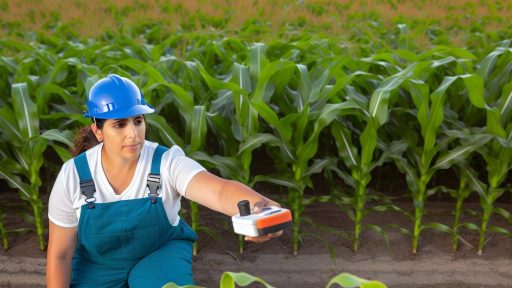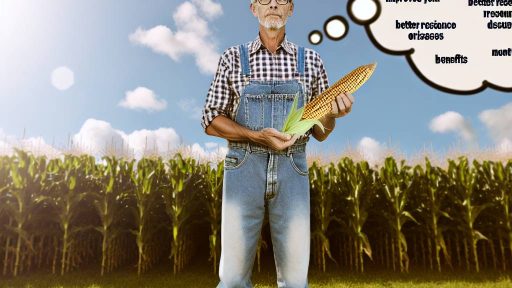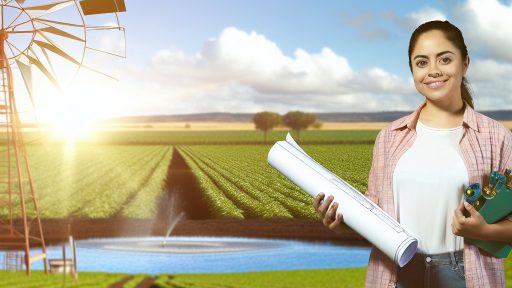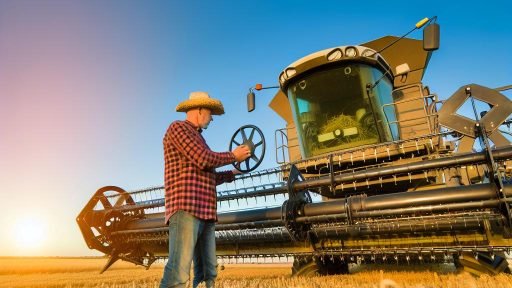Introduction to Controlled Environment Agriculture
Controlled Environment Agriculture (CEA) involves growing plants under regulated conditions.
This approach optimizes environmental factors for plant growth.
Crops can thrive in various climates using artificial settings.
CEA improves efficiency in water and nutrient use.
Moreover, it reduces the need for pesticides.
Thus, it promotes sustainable agricultural practices.
Definition of Controlled Environment Agriculture
CEA integrates advanced technologies for plant production.
Common technologies include greenhouse systems and vertical farms.
These systems control light, temperature, humidity, and CO2 levels.
All factors are adjustable to enhance growth conditions.
Consequently, CEA enables year-round cultivation.
Importance of Controlled Environment Agriculture
Cultivating plants in controlled environments presents several advantages.
First, it maximizes space utilization and yield.
Second, CEA mitigates the impact of climate change.
It also fosters reliability in food supply chains.
Transform Your Agribusiness
Unlock your farm's potential with expert advice tailored to your needs. Get actionable steps that drive real results.
Get StartedConsumers benefit from fresher, higher-quality produce.
Finally, CEA supports local economies by reducing transport needs.
Benefits of Controlled Environment Agriculture
- Enhanced resource efficiency in water and nutrients.
- Improved pest and disease management.
- Consistent quality and supply of crops.
- Reduction of carbon footprint through local production.
- Innovative technologies drive agricultural research and development.
CEA plays a crucial role in future food security.
It addresses both environmental and economic challenges.
Historical Development of Controlled Environment Agriculture Techniques
Early Innovations
The concept of controlled environment agriculture began in ancient times.
Early civilizations cultivated plants in enclosed spaces.
These techniques included greenhouses built to extend growing seasons.
For instance, the Romans used heated greenhouses to grow cucumbers year-round.
Advancements in the 20th Century
The 20th century saw significant advancements in controlled environment agriculture.
Research institutions began conducting systematic studies on plant growth.
In the 1960s, hydroponics emerged as a viable growing method.
This technique eliminated soil, allowing plants to grow in nutrient-rich solutions.
Technological Innovations
Technological advancements have transformed how we practice controlled environment agriculture.
The introduction of artificial lighting revolutionized growing methods.
LED technology offers energy-efficient solutions for indoor farming.
Automation systems enable precise control over climate conditions.
These innovations improve yields and reduce resource waste.
Current Trends
Today, controlled environment agriculture continues to evolve.
Heightened awareness of food security drives innovation.
Vertical farming systems maximize space in urban environments.
Additionally, aquaponics integrates fish farming with plant cultivation.
Future Directions
Future research will focus on sustainability in controlled environment agriculture.
Developing resilient crops can help adapt to climate change challenges.
Furthermore, collaboration between tech and agriculture sectors will drive growth.
Showcase Your Farming Business
Publish your professional farming services profile on our blog for a one-time fee of $200 and reach a dedicated audience of farmers and agribusiness owners.
Publish Your ProfileUltimately, controlled environment agriculture holds promise for the future of food production.
Key Technologies Used in Controlled Environment Agriculture
Hydroponics
Hydroponics is a method of growing plants without soil.
This technique uses nutrient-rich water to feed the plants directly.
As a result, plants grow faster and require less space.
Additionally, hydroponics reduces the risk of soil-borne diseases.
Farmers can control nutrient levels and pH to optimize growth.
Common systems include nutrient film technique and deep water culture.
These systems can be implemented in greenhouses or indoors.
Furthermore, hydroponics conserves water compared to traditional methods.
Aeroponics
Aeroponics grows plants in an air or mist environment.
This technique suspends plant roots in the air for maximum exposure.
In aeroponics, nutrients are delivered through misting systems.
Consequently, plants absorb water and nutrients directly from the air.
This method allows for efficient usage of water and space.
Aeroponics fosters faster growth rates and higher yields.
It is ideal for urban farming and vertical farming setups.
Yet, this technology requires careful monitoring of environmental conditions.
Aquaponics
Aquaponics combines aquaculture with hydroponics.
This system integrates the cultivation of fish and plants.
Waste produced by fish provides nutrients for the plants.
In turn, plants help to filter water for the fish.
This creates a symbiotic relationship that benefits both parties.
Aquaponics systems can thrive in various settings, including greenhouses.
By using this method, farmers can reduce their dependence on synthetic fertilizers.
Moreover, aquaponics systems are environmentally sustainable and efficient.
Find Out More: Biotechnology In Agriculture Key Applications For Farmers
Environmental Control Systems: Managing Temperature, Humidity, and Light
Temperature Control
Temperature management is essential in controlled environment agriculture.
It promotes optimal plant growth and development.
Farmers use various methods to regulate temperature.
For instance, heating systems maintain warmth during cold periods.
Cooling systems, such as evaporative coolers, keep the environment comfortable.
Additionally, thermostats automate temperature adjustments.
These devices ensure consistency, minimizing stress on plants.
Humidity Management
Humidity levels significantly impact plant health and yield.
High humidity can lead to mold and disease development.
Conversely, low humidity may cause dehydration in plants.
To manage humidity, growers utilize dehumidifiers and humidifiers.
These systems help maintain optimal moisture levels.
Moreover, monitoring technology assists in detecting fluctuations.
By maintaining proper humidity, farmers can enhance growth performance.
Showcase Your Farming Business
Publish your professional farming services profile on our blog for a one-time fee of $200 and reach a dedicated audience of farmers and agribusiness owners.
Publish Your ProfileLight Regulation
Light is crucial for photosynthesis in controlled environments.
Artificial lighting systems supplement natural sunlight effectively.
Different types of lights, such as LEDs, offer energy efficiency.
Farmers adjust light duration and intensity according to plant needs.
Using programmable timers simplifies this process.
Additionally, light quality plays a vital role in plant development.
Full-spectrum lights provide the range necessary for optimal growth.
Integration of Environmental Controls
Integrating temperature, humidity, and light systems is essential.
This integration allows for a comprehensive environmental strategy.
Advanced software solutions enable seamless control over these parameters.
Real-time analytics provide valuable insights into environmental conditions.
As a result, farmers can make informed decisions quickly.
This approach maximizes efficiency and cultivator productivity.
Challenges in Environmental Control
Despite advancements, challenges in environmental control persist.
Energy costs significantly impact the sustainability of operations.
Moreover, equipment malfunctions can disrupt controlled environments.
To mitigate these issues, regular maintenance is essential.
Training staff on equipment operation also enhances reliability.
Ultimately, investing in robust systems reduces long-term risks.
You Might Also Like: Biotechnological Approaches To Disease Resistant Plants
Benefits of Controlled Environment Agriculture
Enhanced Yield
Controlled environment agriculture significantly increases crop yield.
This method optimizes growing conditions year-round.
Additionally, it mitigates the effects of weather fluctuations.
Studies show yields can exceed traditional farming by up to 10 times.
Farmers can grow multiple crop cycles annually.
Improved Quality
In controlled environments, crops exhibit superior quality.
Plants receive consistent light, temperature, and humidity.
This results in better taste, color, and nutritional value.
Moreover, the risk of microbial contamination decreases.
Consumers appreciate the uniformity and reliability of the produce.
Resource Efficiency
Controlled environment agriculture uses resources more efficiently.
This method minimizes water usage compared to traditional irrigation.
It recycles water through advanced systems, reducing waste.
Energy consumption is also optimized through LED lighting.
Farmers can utilize precision farming techniques for better input management.
Impact on Sustainability
This agricultural approach promotes sustainability in food production.
It reduces the need for chemical pesticides and fertilizers.
This leads to healthier ecosystems and less environmental pollution.
Furthermore, carbon emissions associated with transportation decrease.
Local production reduces the carbon footprint of food logistics.
Showcase Your Farming Business
Publish your professional farming services profile on our blog for a one-time fee of $200 and reach a dedicated audience of farmers and agribusiness owners.
Publish Your ProfileEconomic Advantages
Investing in controlled environment agriculture can be economically beneficial.
It opens up market opportunities for niche crops.
Farmers can supply fresh produce to local markets.
This results in increased profitability and reduced import dependence.
Moreover, job creation in urban agriculture enhances local economies.
Find Out More: Cost-Effective Automated Machinery Options For Farmers
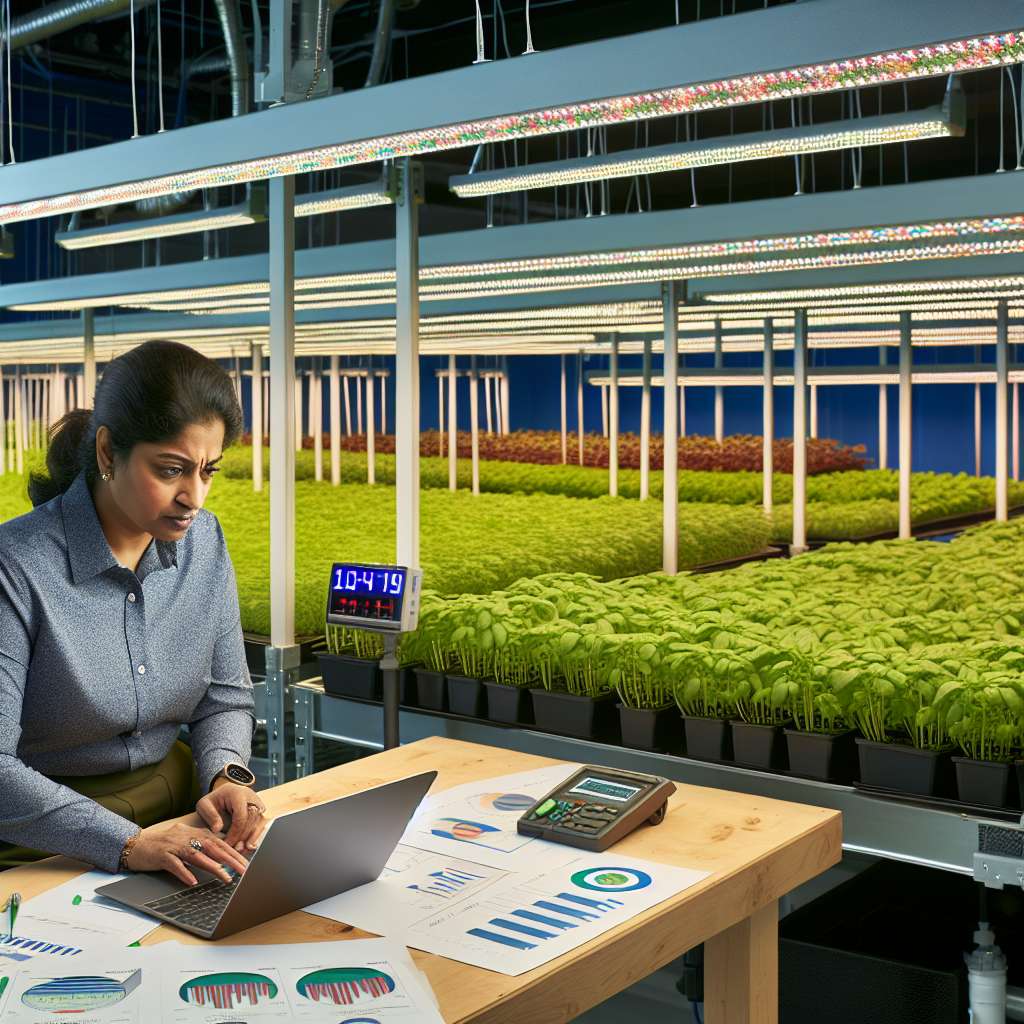
Challenges and Limitations of Controlled Environment Agriculture
Cost Considerations
Implementing controlled environment agriculture requires significant upfront investment.
Initial costs include building infrastructure and purchasing equipment.
Additionally, energy consumption adds to ongoing operational costs.
Many operations depend on high-tech lighting systems to optimize plant growth.
Consequently, electricity bills can become substantial over time.
Despite these expenses, some farmers receive higher prices for their crops.
However, the economic return may take years to materialize.
Thus, financial planning is essential for success in this industry.
Sustainability Concerns
Although controlled environment agriculture improves yield, sustainability remains an issue.
Controversially, it can lead to increased energy usage compared to traditional farming.
Many operations rely on non-renewable energy sources, which raises concerns.
Furthermore, water consumption can be heavy despite efficient systems.
Some growers use hydroponics or aeroponics, which require continuous water flow.
In urban settings, wasted resources can be particularly problematic.
Moreover, the use of plastics in greenhouse structures raises waste concerns.
Consequently, growers must focus on eco-friendly materials and practices.
Technology Limitations
Innovation in controlled environment agriculture evolves rapidly.
However, not all technology is accessible to every farmer.
Many smaller operations lack access to advanced monitoring systems.
Inadequate technology can result in less efficient production processes.
Consequently, farms may face yield fluctuations due to management challenges.
Additionally, reliance on specific brands can lead to vendor lock-in.
This situation may limit farmers’ options for equipment upgrades.
Market Adaptability
The market for controlled environment agriculture is competitive and dynamic.
Farmers must stay updated on consumer preferences to remain viable.
Changes in demand for certain crops can occur rapidly.
Consequently, growers face challenges in predicting future trends.
Moreover, diversifying crop offerings can lead to increased complexity.
Some farmers may struggle to adapt their production accordingly.
As a result, maintaining a flexible business model is crucial for success.
See Related Content: Optimizing Resource Use in Controlled Environment Agriculture
Case Studies: Successful Implementations of Controlled Environment Agriculture Worldwide
Introduction to Case Studies
Case studies provide valuable insights into effective practices.
They highlight innovative solutions in controlled environment agriculture.
Worldwide examples showcase diverse applications and benefits.
Showcase Your Farming Business
Publish your professional farming services profile on our blog for a one-time fee of $200 and reach a dedicated audience of farmers and agribusiness owners.
Publish Your ProfileNetherlands: Leading Hydroponic Innovations
The Netherlands is renowned for its advanced hydroponic systems.
Greenhouse operators utilize innovative techniques and technology.
Companies like Priva integrate climate control systems to optimize growth.
They successfully produce vegetables year-round, reducing food miles.
Singapore: Urban Farming with a Twist
Singapore faces land scarcity, prompting unique farming solutions.
Sky Greens created vertical farms to maximize space utilization.
This company uses a rotating system for efficient plant growth.
Urban agriculture in Singapore promotes local food production.
United States: Vertical Farming Revolution
Vertical farming is gaining traction in urban areas of the U.S.
Companies like AeroFarms lead the charge with innovative technologies.
Their systems utilize aeroponics to grow leafy greens without soil.
This method reduces water and fertilizer usage significantly.
Japan: Integrating Robotics in Agriculture
Japan is at the forefront of agricultural robotics integration.
Companies such as Spread use robots for planting and harvesting.
This automation enhances efficiency and reduces labor costs.
They focus on precision agriculture in a controlled environment.
Australia: Climate Resilience through Automation
Australian farms employ automation to combat climate challenges.
Environmental Control Technologies innovate by using sensors and AI.
These systems adjust conditions to ensure optimal crop health.
Farmers report increased yields in less favorable weather conditions.
Implications of Controlled Environment Agriculture
These case studies highlight diverse global efforts in agriculture.
They showcase the potential of controlled environments for optimal growth.
Moreover, they inspire future innovations in sustainable farming.
Future Trends in Controlled Environment Agriculture: Innovations and Research Advances
Emerging Technologies
New technologies are revolutionizing controlled environment agriculture.
Automation and robotics play a significant role in operation efficiency.
Furthermore, artificial intelligence enhances data management and decision-making.
Vertical Farming Expansion
Vertical farming continues to gain popularity across urban areas.
This method utilizes limited space effectively for maximum yield.
Additionally, it reduces transportation costs due to proximity to consumers.
Sustainable Practices
Sustainability is becoming a central theme in modern agriculture.
Water conservation techniques minimize usage while ensuring high yields.
Moreover, organic methods are increasingly adopted in controlled environments.
Healthier Crop Varieties
Research focuses on breeding healthier and more resilient crop varieties.
These varieties withstand pests and diseases better than traditional ones.
As a result, farmers achieve higher productivity with reduced chemical inputs.
Climate Change Adaptation
Controlled environment agriculture offers solutions to climate change challenges.
By providing stable growing conditions, it mitigates climate unpredictability.
Thus, it supports continuous food production regardless of external conditions.
Collaboration and Research Initiatives
Cooperation between academia and industry drives innovation forward.
Research initiatives focus on optimizing energy use and resource efficiency.
Showcase Your Farming Business
Publish your professional farming services profile on our blog for a one-time fee of $200 and reach a dedicated audience of farmers and agribusiness owners.
Publish Your ProfileNew academic programs cultivate the next generation of agricultural innovators.
Additional Resources
A comprehensive review on smart and sustainable agriculture using …

